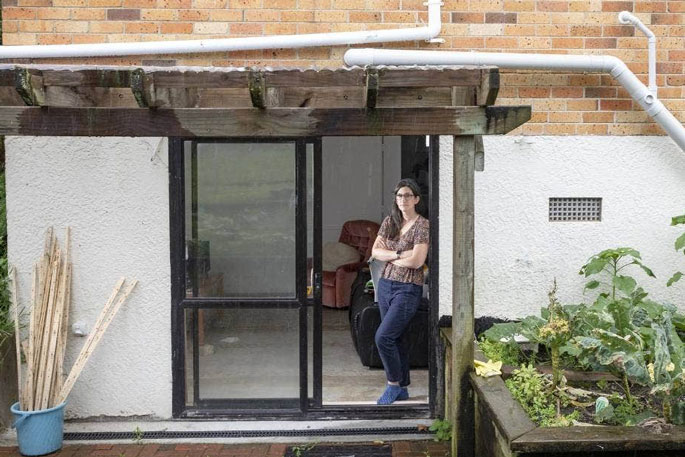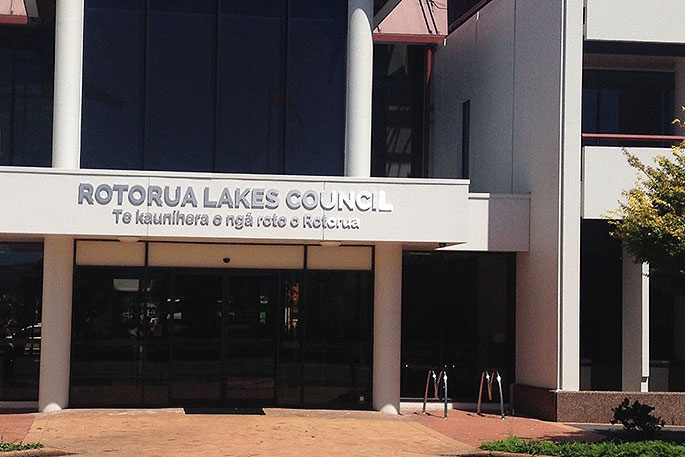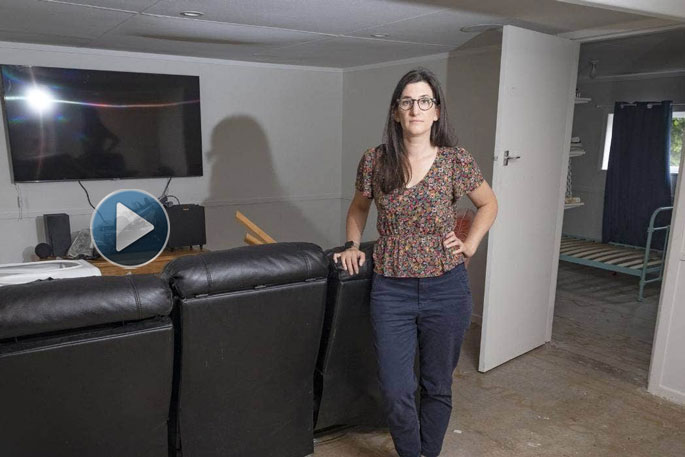Rotorua woman Kara Niles worries for the future of her family home as repeat flooding has made it uninsurable and potentially unlivable.
She says not a day goes by where she does not think of the flooding threat and believes the council should take responsibility for the issue.
The council says it has no obligation to fix the property's flooding issues but has tried to help.
Niles lives with her family on Jervis St in a home they bought in 2019. There were no issues for the first two years.
Now is a different story.
'I always live with flooding on my mind. Not a day goes by where it's not there,'' Niles told the Rotorua Daily Post.
'It's quite traumatic for us.”
Weather events, like the deluge the North Island has experienced the past week, increase her anxiety about the situation.
Between 70 to 100mm of rain was expected between 9am and 9pm on Wednesday with peak rates of 10 to 20mm an hour. Rotorua Lakes Council advised residents to stay vigilant about water levels and have a plan in place if necessary.
This came after a particularly wet weekend which caused widespread damage and disruption.
 Only after buying her property did Kara Niles find out the lower level wasn't consented for living in.
Only after buying her property did Kara Niles find out the lower level wasn't consented for living in.
Sandbags are stacked at the Niles' fenceline in anticipation of water approaching from the street.
They knew the area had flooded before but did not expect any issues with the house. Problems began about a year and a half ago, in 2021, when the Niles' home flooded twice.
At the time, they did not know what was causing it, other than rain falling directly onto the property, and so spent $45,000 for a pit to be put in the front yard. She said they just had wanted to 'do it right”, and installed a major stormwater system.
Andersen Civil & Drainage owner Chris Andersen said his company built the stormwater system according to the design it was provided.
Andersen said there was water coming into the Niles' land from outside the property, which was not abnormal.
He said he was sympathetic to the Niles' situation and was happy to keep working with them.
Niles said that when the flooding happened again in March last year, it was devastating. The total cost of damage, including furniture loss and carpet removal, from that event, was $50,000. Insurance covered this but the family lost flood coverage after that.
The family found out in March last year that water was coming down the street and into their property, which sat at the lowest point of the road. At this point, Niles said she contacted Rotorua Lakes Council.
'We pleaded with them. What could keep the water away from our house?”
She said the council had done some work, which had helped. This included installing an inlet to provide another access point for the flowing water to reach the stormwater network.
In a letter to Niles last September, Rotorua Lakes Council advised the works were a solution to the overland flow flooding on their property and would help it drain during small rain events.
But there was no guaranteed protection against all rain events.
The council also said while it undertook that work, it did not imply or accept it had responsibility for past or future effects of surface flooding that occurred in the area.
The network was well maintained and met its condition standards.
'We understand the stress that previous events have caused you through no fault of your own, and RLC were willing to carry out this work on the road reserve to reduce the effects of future rain events,” the letter said.
The property flooded again during the day in mid-December last year and Niles said council engineers had attended to see what else could be done.
This included raising the berm by their home.
The family had been given permission to fill a nearby drain with concrete to stop it flowing their way when water pooled at it, as well as build a wall at their fenceline where water flowed down from the neighbours.
Niles said this was the most optimistic she has felt about the issue but she still believed the council should take responsibility.
 Rotorua Lakes Council has made some changes in a bid to help the Niles but says it can't do any more, and there is no obligation or mandate to improve drainage systems on private property.
Rotorua Lakes Council has made some changes in a bid to help the Niles but says it can't do any more, and there is no obligation or mandate to improve drainage systems on private property.
The downstairs of the home had two bedrooms, a garage and a living room but Niles said she had learned after buying that it was not consented for living in despite sections being furnished and carpeted.
Niles said the council's message was that it had no responsibility because that part of the house did not have consent.
'My argument is that it is still a house. Even if we leave downstairs uninhabited, we can't get insurance, we can't get flood coverage.”
Beyond this, she worried it would impact the foundation and walls of the home, and the downstairs needed to be sanitised every time it flooded.
'It's filthy, filthy water coming from the pipes basically.”
The family's priority was to do 'whatever it takes” to get the house insurable again.
'We love our house.
'Now, the question is: Can we actually live here?”
Niles said the family was now thinking of moving because the downstairs bedrooms were not usable and her two children were getting older and needing their own space. Their foster son had to move out as there was no longer room.
She believed the family had potentially lost hundreds of thousands of dollars off the home's worth. They felt trapped and without options.
Rotorua Lakes Council infrastructure networks performance manager Eric Cawte said the council was always willing to investigate potential causes of flooding on private property and to improve public systems if warranted and possible.
He said there was no obligation or mandate to improve drainage systems on private property.
'Council has undertaken work to alleviate the situation at Jervis St and we continue to work with the owner to investigate and determine if there is anything further we can do. We are happy to address any additional matters directly with the property owner, rather than through the media.”
Cawte said staff would investigate if there were options to reduce the risk of stormwater flow entering properties.
He noted the Niles' property was below road level and had no natural surface outlet for water to flow away, other than through ground soakage.
The original habitable level of the house was above flood level, but not the unconsented space below.
'Depending on topography, in heavy rain events, any property can receive surface flows from neighbouring properties or contribute to flows to other properties.”
Cawte said road drainage systems were designed to collect and divert water into public stormwater networks that were designed to the required standards at the time they were constructed. Much of Rotorua's network was designed to cope with a one-in-10-year rain event and any larger event was catered for by overland flow paths
'Design and build of modern homes generally takes this into account.”
Network capacity increases were a work in progress and would take time. He said these were prioritised according to set criteria and the current programme and budget did not include Jervis St.
The council had received no complaints or communication from other Jervis St residents about flooding and was not aware of any flooding at the Niles' home prior to 2021.
There was no record of a LIM being requested or issued for the Niles' property since 2007 and the council was not aware of any flooding there before 2021.
The forecast for the city over the next week was for more wet weather, with the next day without rain expected to be Wednesday.
-Local Democracy Reporting is Public Interest Journalism funded through NZ On Air.




0 comments
Leave a Comment
You must be logged in to make a comment.